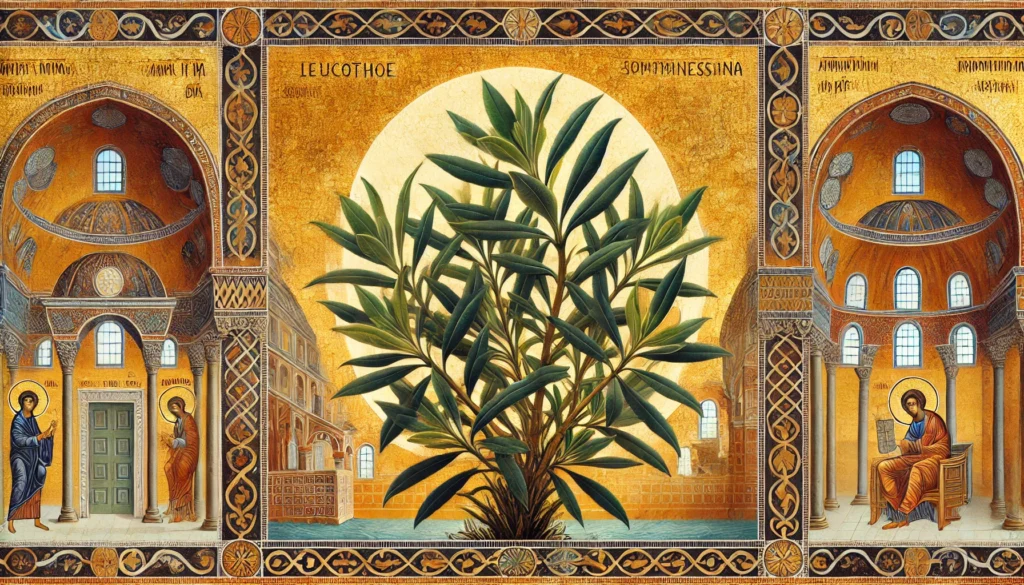

Home » Cat Plants » Dog Hobble Plant Dangers: How It Can Harm Your Cat?

Dog Hobble, also known as Leucothoe fontanesiana, is a popular evergreen shrub native to the southeastern United States. While it may be an attractive addition to your garden, it is important to note that Dog Hobble is highly toxic to cats. This plant contains grayanotoxins, which can cause severe poisoning if ingested by felines.
Dog Hobble is commonly found in wooded areas, along streams, and in landscaped gardens.
Ingestion may cause mild gastrointestinal upset, but is generally not life-threatening.
Ingestion can result in mild symptoms like vomiting, diarrhea, or drooling. Rarely fatal but may require veterinary care.
Eating these plants can lead to more pronounced symptoms like abdominal pain, lethargy, or difficulty breathing. Veterinary intervention may be necessary.
Ingesting even small amounts can cause severe symptoms like organ damage, seizures, or cardiac failure without rapid treatment.
All parts of these plants are extremely poisonous to cats and can quickly lead to death, even with immediate veterinary care.
** Please note: Please note that toxicity level can vary based on the amount ingested and the specific cat. It's always best to keep these plants completely inaccessible to cats and seek immediate veterinary care or call the poison hotline if you suspect your cat has ingested any part of a toxic plant.
If your cat has ingested any part of the Dog Hobble plant, they may exhibit several symptoms of toxicity. These can include:
In severe cases, ingestion of Dog Hobble can lead to death. It is crucial to seek immediate veterinary care if you suspect your cat has consumed any part of this plant.
If you bring your cat to the veterinarian with suspected Dog Hobble poisoning, they will likely follow these steps:

A: Yes, cats can be allergic to Dog Hobble. Symptoms of an allergic reaction may include itching, sneezing, and skin irritation.
A: Yes, Dog Hobble, also known as Leucothoe, is toxic to cats. Ingesting any part of this plant can cause symptoms such as vomiting, diarrhea, and drooling.
A: Symptoms of Dog Hobble poisoning in cats include vomiting, diarrhea, excessive drooling, abdominal pain, and lethargy. Immediate veterinary care is recommended if ingestion is suspected.
A: To prevent contact, ensure that Dog Hobble is not present in your home or garden. Keep your cat indoors or monitor outdoor activities closely to avoid exposure.
A: If your cat ingests Dog Hobble, contact your veterinarian immediately. Do not induce vomiting unless instructed by a veterinary professional. Immediate medical attention is necessary.
A: Yes, Dog Hobble is commonly found in gardens and as an ornamental plant. It is important to ensure this plant is kept out of reach of cats to prevent accidental ingestion.
Dog Hobble, or Leucothoe fontanesiana, is named after the French botanist René Louiche Desfontaines. This evergreen shrub is native to the Appalachian Mountains and surrounding regions, where it thrives in moist, shaded areas. Native Americans historically used Dog Hobble for medicinal purposes, such as treating rheumatism and skin conditions.
In the 19th century, Dog Hobble gained popularity as an ornamental plant due to its attractive foliage and white, bell-shaped flowers. However, its toxicity to animals was not widely known until the 20th century, when veterinarians began reporting cases of poisoning in pets, particularly dogs and cats.
Please note: The information shared in this post is for informational purposes only and should not be considered as veterinary medical advice.
🐾 A hilarious or heart-melting cat video
🐾 Our latest paws-on review of a cool cat toy